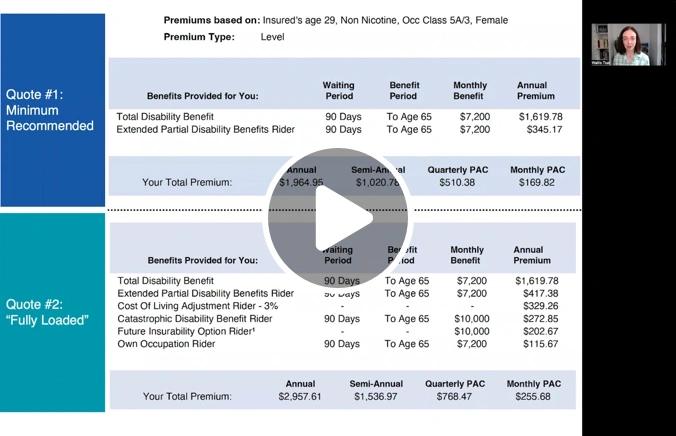With disability insurance, you can choose features on your policy that are kind of like upgrades on a car: you pay more than the base price to get a feature you want. With disability insurance, these features are called "riders".
The Cost of Living Adjustment ("COLA") rider on disability insurance adjusts your monthly benefit for inflation, but as with many financial matters, the devil is in the details.
COLA riders on disability policies function differently from how most people expect, including countless AboveBoard clients who had paid up for the feature on a policy bought elsewhere before coming to us.
COLA is not necessarily a bad choice, but you should understand what you're getting by choosing the feature.
How COLA Riders Work
With most individual disability insurance policies, the adjustment does not begin until the 2nd year that you are actually on claim. That might not sound like a big deal, until you consider the fact that most people don't go on claim right after getting their policies.
Let's imagine you purchased a $10,000 / month benefit today, and received a cancer diagnosis in 10 years. Let's imagine you were unable to work for 2 years. With the vast majority of COLA riders, you would get the the $10,000 / month for the first year, even though we're talking about 10 years from now.
If inflation had been pretty low at 2% / year (i.e. not eating away at your benefit too badly), 10 years from now you'd need a $12,190 / month benefit to feel like you're getting $10,000 of value today. So even though you'd bought the COLA, you'd feel like your benefit was nearly 20% short of what you'd thought you bought.
In the second year, you'd get one inflation adjustment. Many COLA riders follow CPI (Consumer Price Index). At 2% CPI, your benefit would be $10,200 / month in the second year.
When Would You Wish You Had COLA?
If you went on claim not too long after getting your policy and that claim was not the average claim of just under 3 years, but rather a very long-term disability claim, then you would be very happy to have the COLA rider. This experience is less common, but it does happen. If this is a scenario that you feel particularly concerned about, or the cost of the COLA rider feels like a modest expense to you, then it can be worthwhile.
The Best Solution
If you are considering the COLA rider but are on the fence, we recommend looking at a quote for the maximum monthly base benefit that you can qualify for today. In general, you should not buy less monthly benefit than you qualify for while still adding COLA.
If the premiums for the full monthly benefit without COLA are in-budget, then if you wish to add COLA, go ahead -- it is not a bad feature and in some situations can be very valuable. The goal of this blog post was simply to ensure you make an informed choice about what COLA does for you.
Lastly, keep in mind that most carriers let you drop features later, without penalty. The COLA feature has more value for younger people because they are more working years left in their lives.
For example, a 30 year old getting coverage today might choose COLA because they are 35 years from planned retirement - if they were in a permanently disabling car crash next month, COLA would have huge value. But perhaps they plan to drop the COLA rider if they reach age 50 and are still in good health -- at that point, they only have 15 years until retirement, and the COLA adjustment has less value.




